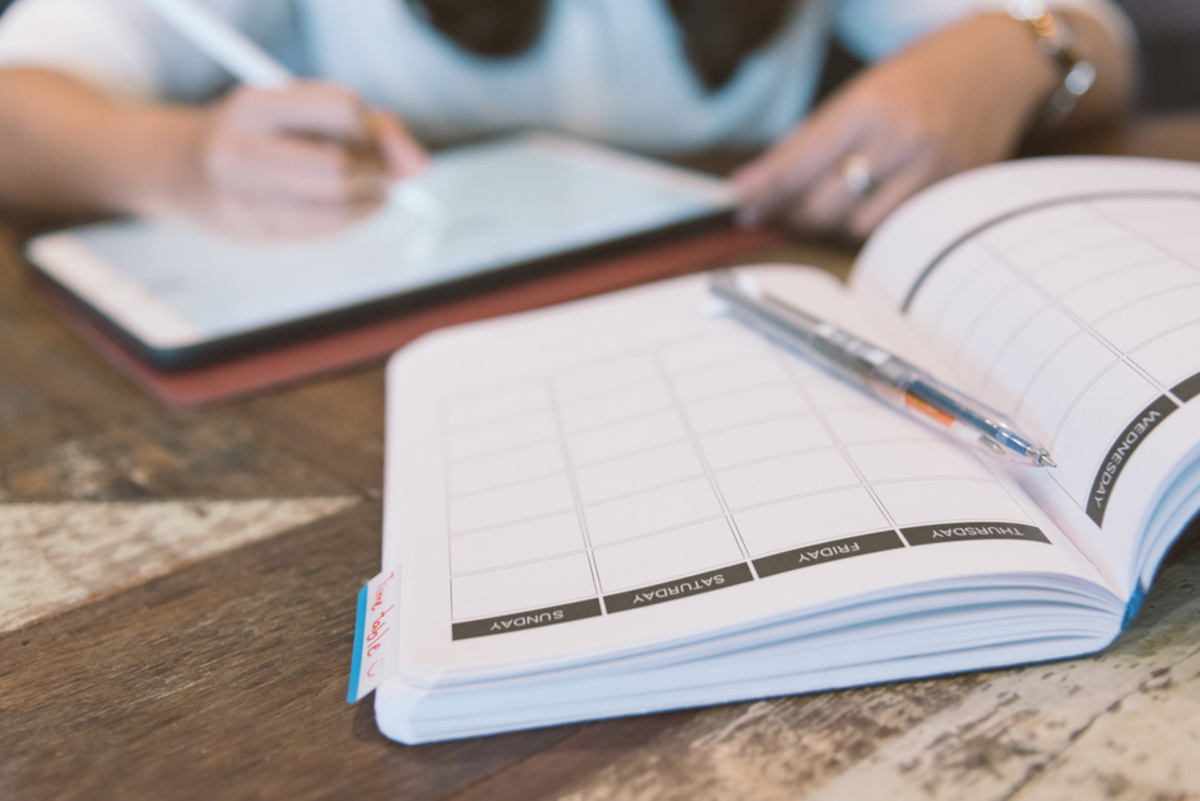There are three basic elements to a paper planner:
- When you need to be someplace: Schedule. This is probably the most important element of a planner. When is your next meeting? When is Dave’s birthday? Can you fit in an extra spin class this week? What’s on your calendar is a direct projection of where you’re going to spend your time.
- What you need to do: Tasks. A very close second, your planner stores the things you need to do. Writing down what you need to do lets your brain focus on the task at hand, instead of juggling everything you haven’t done yet.
- What you need to know: Notes. Often overlooked, you should have space to capture. Commitments made. Ideas for later. Your past self can even leave you messages here, like confirmation numbers you’ll need.
You’ll occasionally see other elements, like expenses you incurred or a meal planner, but those can usually be captured in the notes field. A motivational quote is almost obligatory. I can get by without a scenic image of a tranquil lake, but I need those words of encouragement from Voltaire.
A layout should give you more than space to write in—a blank piece of paper will do that (and there have been days I’ve done exactly that with an index card). A layout should guide you through the process of planning, executing, and capturing your day. It should have enough structure to show you the path forward while granting you the flexibility to work your way.
What kind of layout is right for you? Let’s take a look at some common layouts.
Two Pages per Day
The two-page-per-day format is extremely common. It’s the layout I used for most of my time using a Franklin planner and it’s the layout I use with my Full Focus Planner.
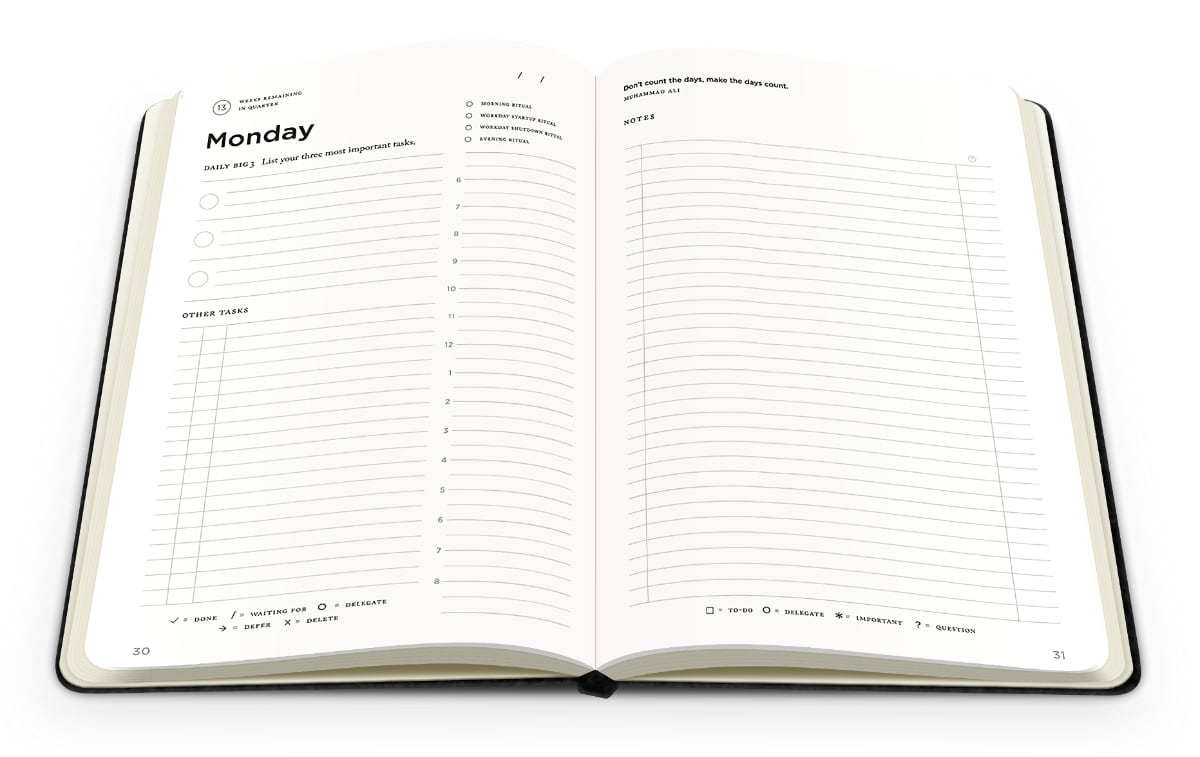
Typically, half a page is used for tasks, half a page for your schedule, and the other page is for notes. (The Full Focus Planner, above, gives slightly more room for your tasks than your calendar.)
This is a good general-purpose layout. You have room for everything you need—a ton to do, a day full of meetings, and the notes that come out of it. If it’s more than you need, your planner will be thicker than it could be and you might get discourage because you feel you aren’t using it to its full potential.
One Page per Day
If two pages per day ticks all the boxes but it’s too much space, what do you do? Cut it in half, of course!
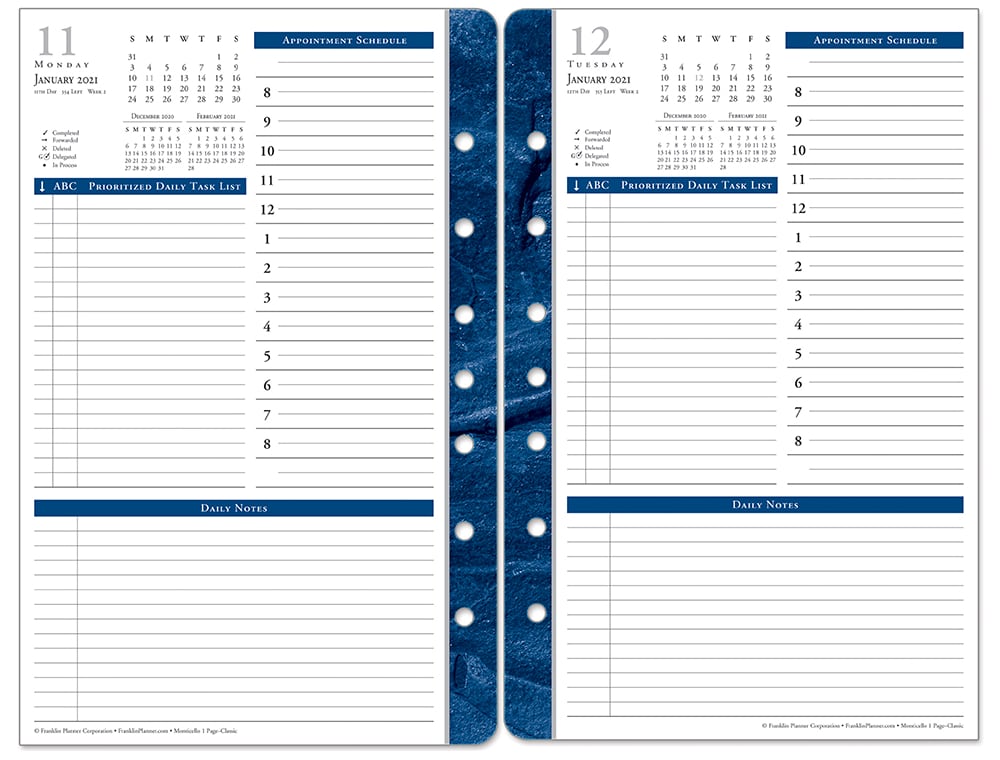
One-page-per-day planners keep the same basic structure as a two-page-per-day layout, but fits everything on a single page. You still have room for a full day for meetings, more tasks than you can get done, and respectable room for notes.
It’s a respectable layout.
Weekly Grid
In First Things First, Stephen R. Covey and A. Roger Merrill lay out a strong argument for weekly planning: it’s close enough to the ground that you can select meaningful units of work, without losing day-to-day continuity. It’s the planner format they recommend.
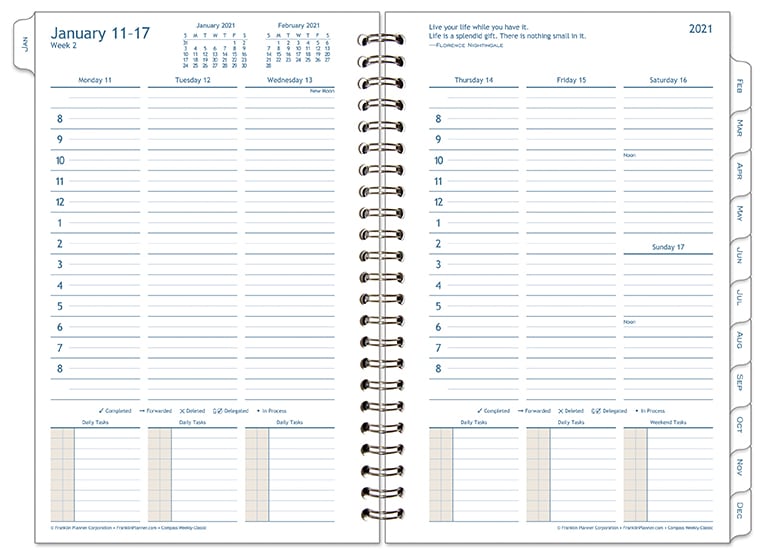
By viewing all days at a glance, you can see patterns in your schedule. On which days are you going to be stretched too thin? To which days could you shift some tasks or appointments? I like how this format aligns with the blueprint for an ideal week.
I’ve used this layout before and it has two downsides. First, there’s no room for notes, so it’s hard to capture information and jot down quick ideas as they happen. Second, Saturday and Sunday are half days, and my weekends are often more structured than my weekdays! It’s a very pragmatic choice (three columns per page) that will work fine if you do most work 9–5, Monday–Friday, and have less structure on the weekends.
Weekly Agenda
The weekly agenda planner is about as basic as planners get. Most have a homogenous space for tasks and appointments. If you only have one or two places to be each day, don’t have many tasks to track, and want a thin planner which won’t take up much space, this will meet your needs. (A full year is only 53 pages.)

Some agendas are more focused on tasks and give you more room for the week by reducing the space available for notes.
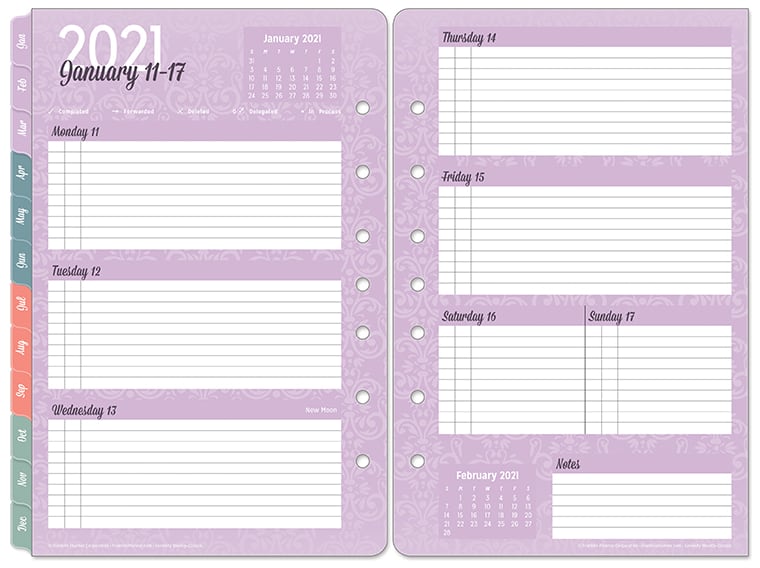
Either way, weekly agenda-style planners are best for light duty. You have a limited number of things to remember, so a basic planner is all you need.
Dot Journals
Dot journals, recently popularized by The Bullet Journal Method, are a fascinating category of planner.
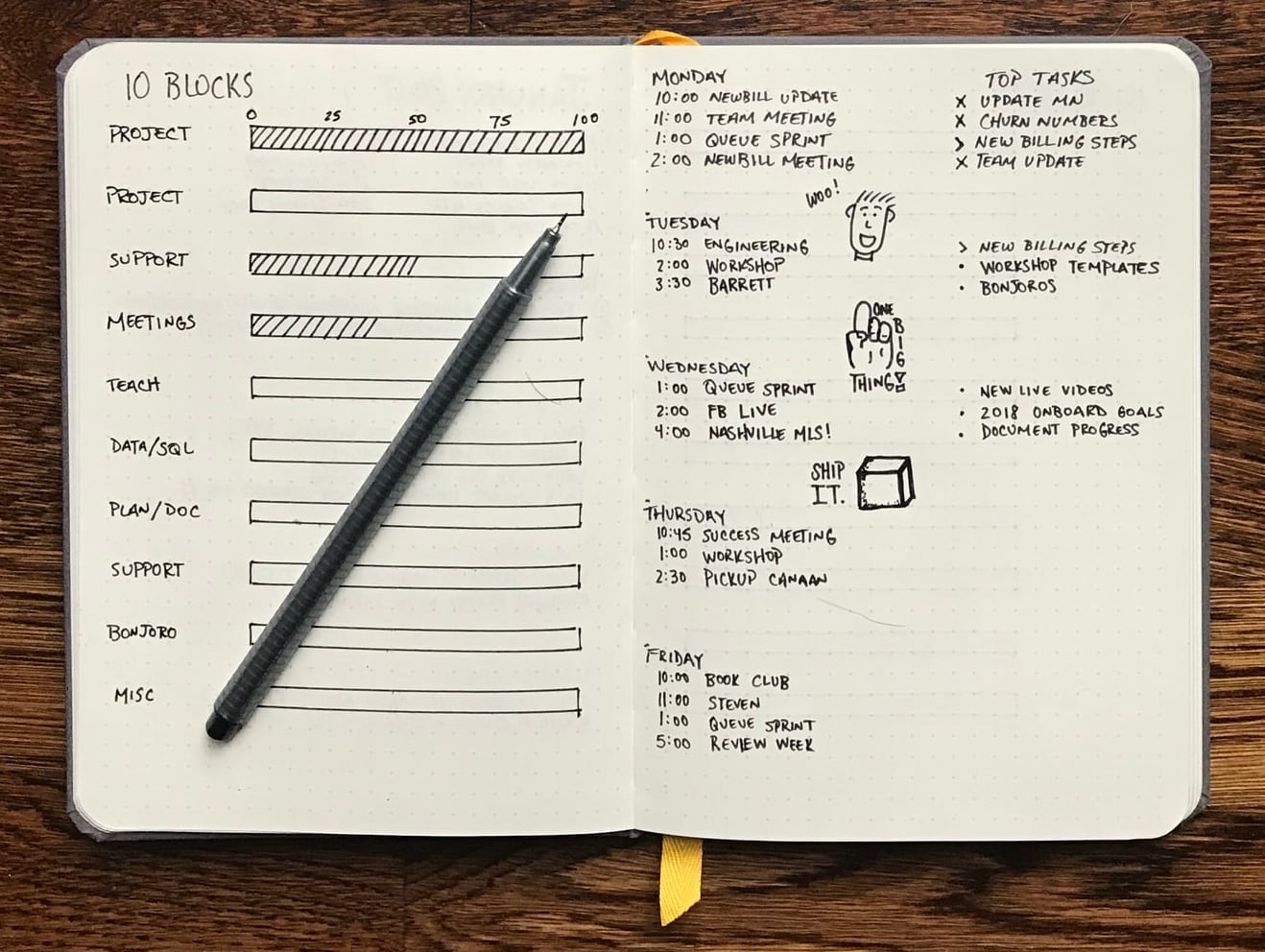
They’re for novices because you can just start writing. They’re for advanced users because you can fine-tune the design of each page.
They’re for people who like to doodle. They’re for people who like a clean, minimalist appearance.
The strength of a dot journal is that each page can be exactly what you need that day. Lots of meetings and no tasks? Lots of tasks and no meetings? Going on a road trip and just want to keep track of what night you’re staying in which national park? It’s got you covered.
That’s also it’s biggest weakness. Each page starts out blank. It’s up to you to create the structure you need for that day. If you’re already feeling overwhelmed by what you need to do, figuring out what you need your planner to look like today can be enough to cause even the most organized of us to retreat into Quadrant 4.
The good news is these are also the cheapest out there. You can pick up a dot journal for a few bucks and get started.
A planner is designed to help you be productive. It tracks the tasks, schedule, and notes you need so you can stop thinking about what you need to do and start doing it.
Pay attention to how you’re using your planner. Do you have way more room than you need? Not enough? “I’m not using it” could be a sign that your planner isn’t a good fit. The next time you buy a planner, try changing things up.
Question: Do you have a favorite planner layout? Let me know! Share your thoughts in the comments, on Twitter, LinkedIn, or Facebook.
